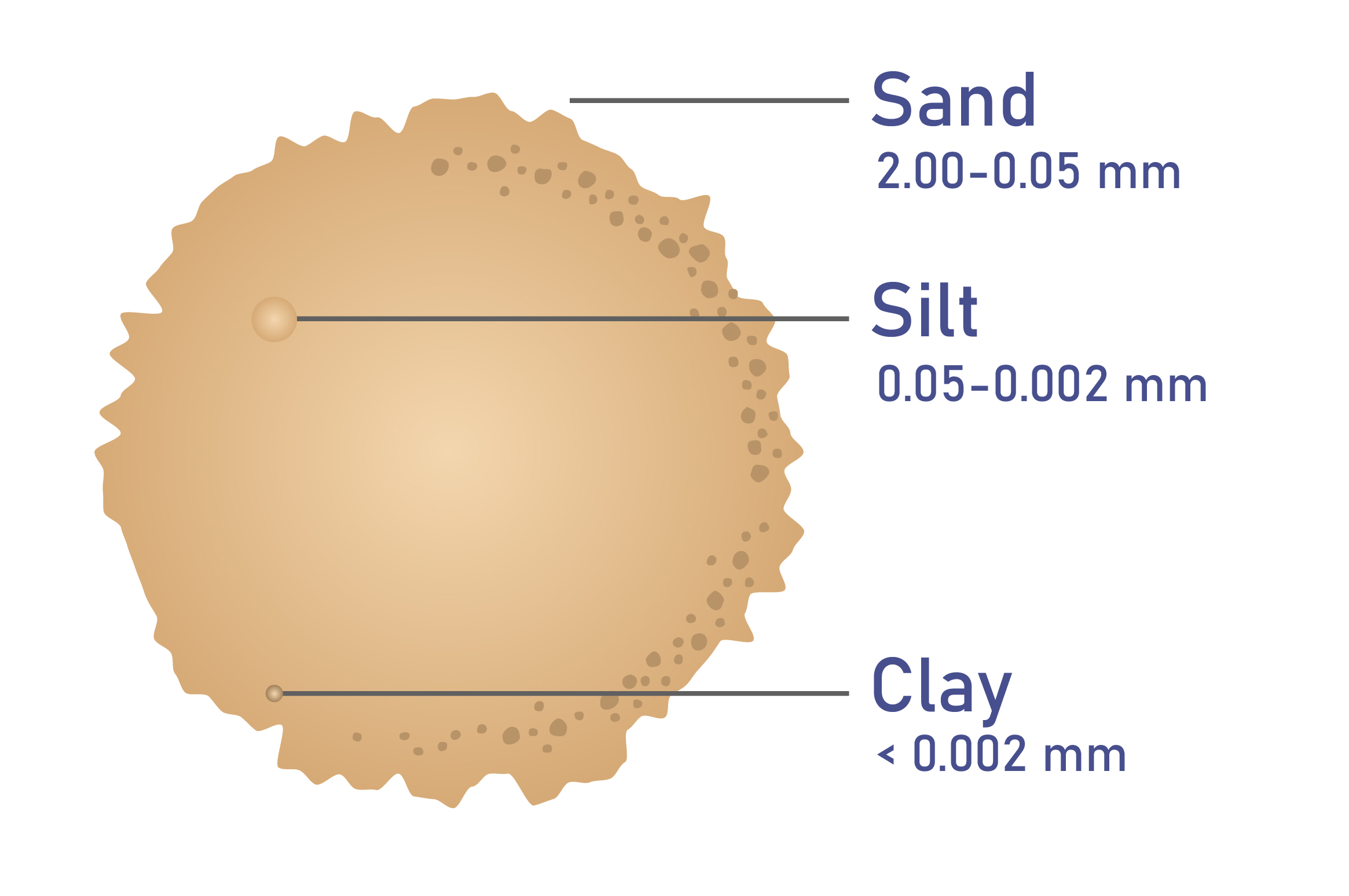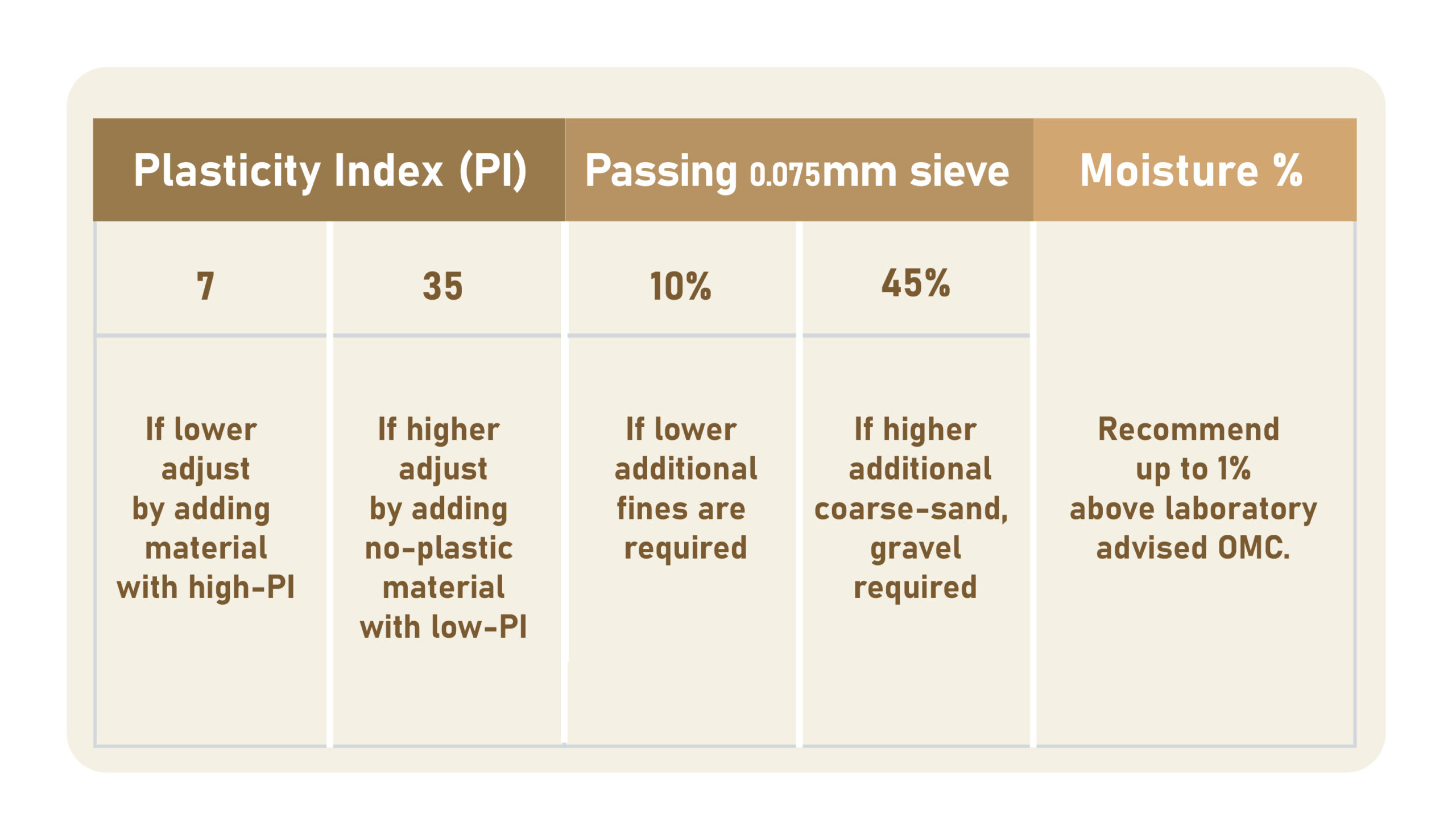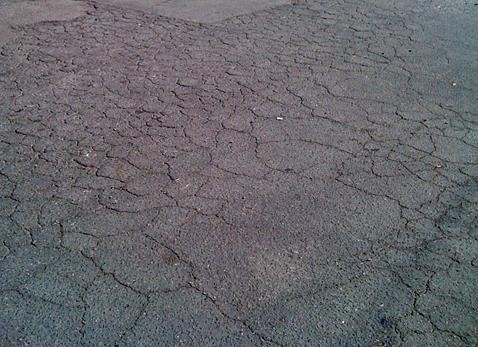Soils/Environment/Product
How Firmaroad SS-3 works
Chemical Soil Stabilisers
Firmaroad (M.O.E.)(R) SS-3 Chemical soil stabiliser is an ionic soil treatment which produces significant changes in clay bearing materials used in construction.

Clay
This smallest particle in the pavement can be your biggest enemy if not controlled. Don't discard clay, make it work for you permanently.

Environment
In recent years more and more emphasis has been put on protecting our environment. Firmaroad SS-3 is a consentrated non-toxic product which only needs to be diluted with water on site.

Ionic Soil Stabilisers (ISS)
Simply put, chemical soil stabilisers are a mixture of chemicals which have been formulated to change the engineering structural properties of soils.
Clay
While there are several different clays, having different colours, they generally have one thing in common, they attract and re-act to water. Countless particles retaining moisture are the main cause the material becomes waterlogged and prevent the pavement from being compacted as desired. Above optimum moisture content (OMC).

These clay particles and the captured moisture go hand in hand to produce plasticity, which is a serious problem in earthworks projects. The movement and strength of expanding or shrinking clay can, and does cause severe damage to road pavements, building foundations etc. Firmaroad SS-3 Chemical treatment of the clay can permanently stop this behavior and will eliminate the excessive movement to strengthen the pavement materials and extend the structures life by many years. Firmaroad SS-3 is able to achieve this by treating only the minute clay particles which are a small percentage of the entire pavement mixture.
Environment
In recent years more and more emphasis has been put on protecting our environment. With this in mind it is essential that we all be responsible to ensure our actions do not cause un-necessary damage wherever possible.
During the development of Firmaroad SS-3 soil stabilising chemical, those involved were ever aware of ensuring the product only contains quality ingredients listed on the Australian Inventory of Chemical Substances (AICS) with all manufacturing carried out to ISO 9001 requirements. Furthermore our SDS was prepared according to the Safe Work Australia Model Code of Practice for the Preparation of Safety Data Sheets for Hazardous Chemicals. Classified as Schedule 6 (S6) Poison using the criteria in the Standard for the Uniform Scheduling of Medicines and Poisons (SUSMP). Australian standards categorize the product as non-lethal in relation to LD50 classifications, and non-toxic.

Ionic Soil Stabilisers (ISS)
Firmaroad SS-3 an ionic soil stabilising chemical (ISS) offers the user the best possible benefits of the chemical blend, while complying with the renown Australian quality standards during the formulation process. Note: In the interest of safety, it is advisable to check the SDS of any similar products not formulated in Australia to confirm the accuracy and honesty of the claims regarding non-hazardous ingredients and PH % etc. which may be mis-leading.
- non-toxic
- non-fuming
- improves working conditions
- non-flammable
- allows gravel blending to reduce waste
- Non bulky, reducing transportation fuel emissions
How ionic chemical soil stabilisers work.
Simply put, chemical soil stabilisers are a mixture of chemicals which have been formulated to change the engineering structural properties and behavior of soils and gravels contained in road bases to improve their performance to meet or exceed project requirements/specifications. Problematic clay particles which attract and retain water contribute to the failure of many foundations and road pavements. Clay particles once treated by a combination of specially formulated chemicals such as Firmaroad SS-3 lose the ability draw and hold moisture.

The Working Process of Firmaroad SS-3
As the chemical quickly disperses throughout the gravel mixture and treats the clay particles, the material quickly loses its stickiness.
The chemical/water mixture contributes to a more even distribution of moisture as the clay particles lose their ability to bond to water and hold it. This is essentially why pockets of damp material are unable to dry out and eventually cause weak areas within the pavement.
The entire mixture of pavement particles will then become much more evenly mixed as the now non-sticky clay has transformed into usable fines.
These fines will then contribute towards achieving a denser mixture which has the ability to bind and compact much more tightly.
After the mixing has been completed and the pavement has been compacted the surface will display a tightly knit smooth finish which will resist the penetration of unwanted moisture in future.
The newly constructed pavement’s ability to lock out unwanted moisture is not only achieved on the finished surface, but also on the road shoulders and from the deeper subgrade’s underneath.
The treated pavement can be used within hours and will only require light sprays of water to prevent fast drying until fully cured.
The compaction CBR/ bearing strength, and shear strength, will now be much higher than an untreated pavement constructed using the same material. The behavior of the clay particles has now been adjusted by a non-reversable chemical procedure.
The CBR/bearing strength of treated material increases dramatically during the first four days. The process then slows down but continues to increase for up to 28 days.

